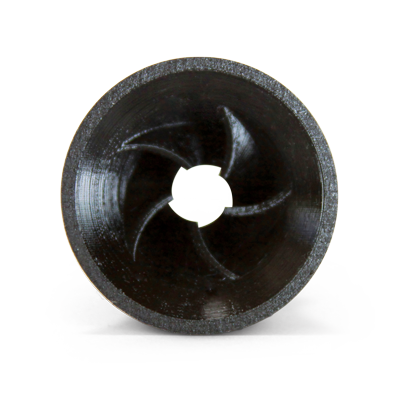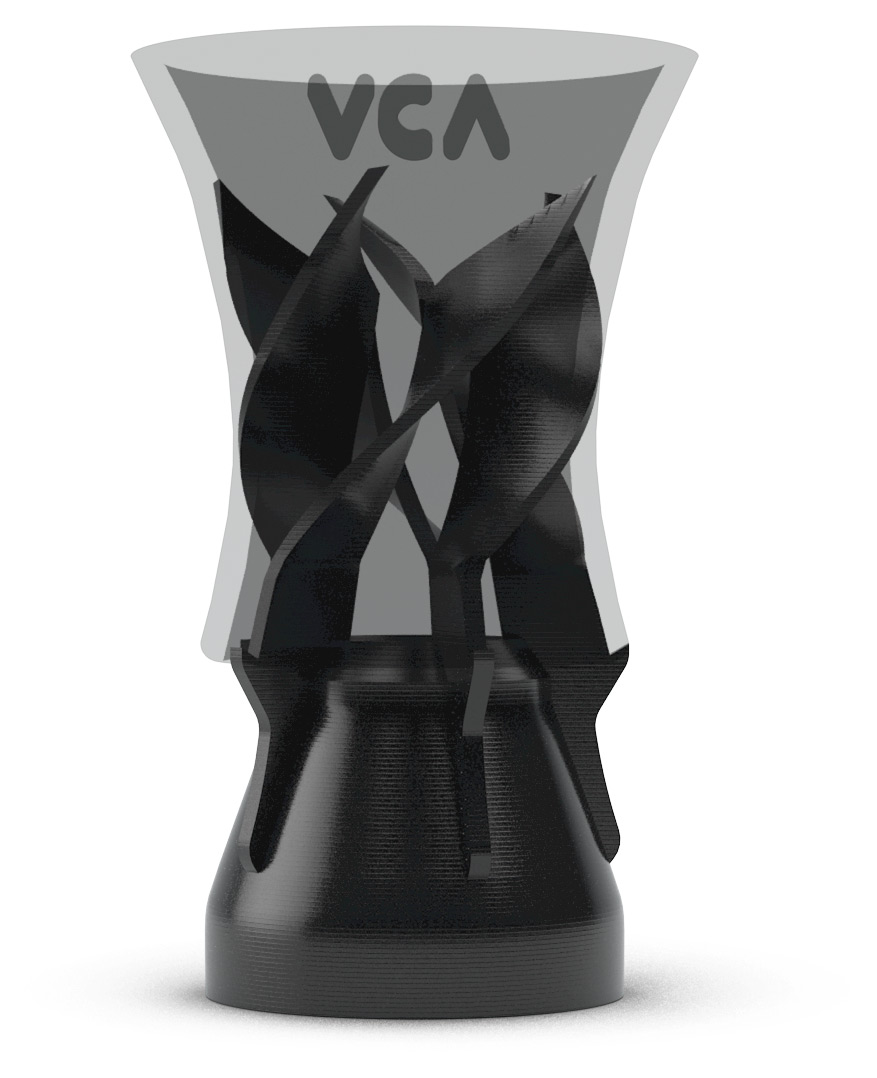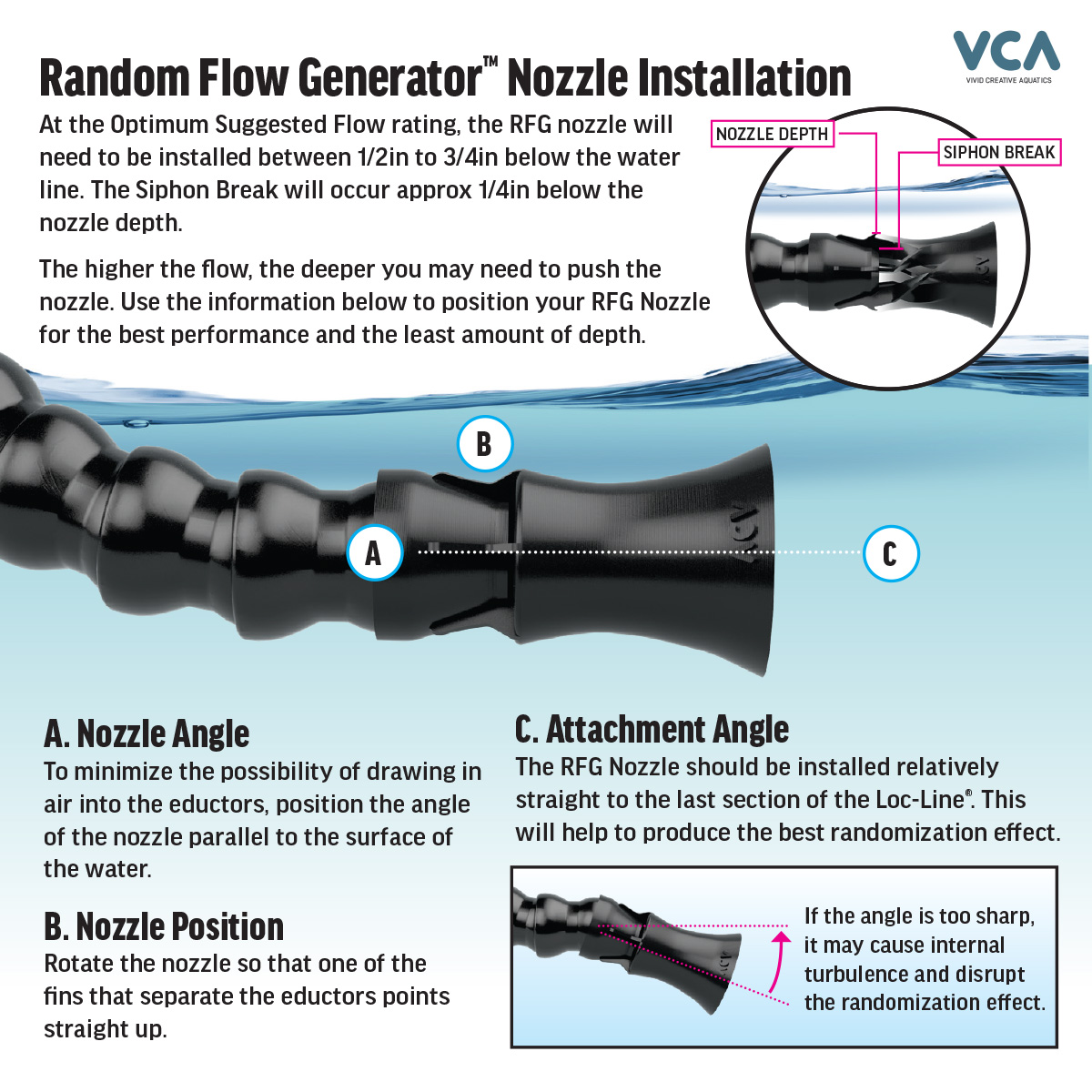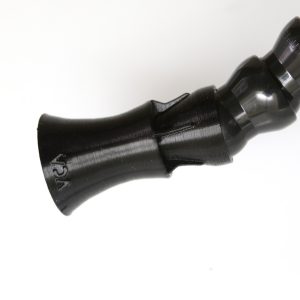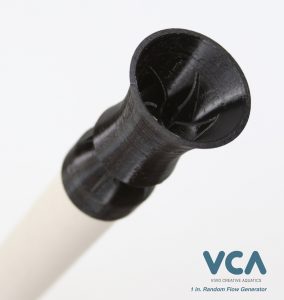Frequently Asked Questions
How should the RFG Nozzle be positioned for the best results?
What’s the purpose of the RFG Nozzle
The RFG Nozzle is designed to provide a more random flow pattern in your aquarium. Instead of just producing a laminar flow pattern like most aquarium nozzles, the unique internal shape of the RFG Nozzle causes the water flow to randomly change direction as it exits the nozzle.
How does it work?
The random motion of the flow created by the RFG nozzle is accomplished through fluid dynamics. There are no moving parts.
The internal structure is made up of a helix of spiraling fins that run nearly the entire length of the nozzle.
When water moves though the nozzle it creates an accelerated stream of flow that passes through the center of the nozzle. This stream acts like a solid rod that isolates the fins, forming a set of internal channels.
Each channel is connected to its own eductor at the base of the nozzle and draws in additional water. When one of these channels draws in a little more water than the others, it becomes the dominant channel.
The dominant channel then bends the center stream into that channel, causing the bulk of the water moving through the nozzle to exit through that one channel for a short period of time, until the next channel because dominant.
This process repeats itself over and over, as long as water is moving through the nozzle. The end result is a nozzle that can vary the intensity and direction of the stream of water exiting the nozzle creating a more natural, randomized flow pattern.
Does it rotate or have any moving parts?
https://www.youtube.com/watch?v=CwJdC_mDVog
How much flow does the RFG need?
How do you install the RFG Nozzle?
Easy – the 1/2in and 3/4in RFG Nozzles sizes simply snap to the end of genuine Loc-Line branded modular hose. The RFG was specifically designed to easily attach while still maintaining a secure fit.
The 1in RFG Nozzle on the other hand is designed with a slip-fit end that snuggly fits standard 1in PVC pipe – no glue required.
All three sizes are just as easy to remove with very little effort for cleaning.
How do you use the RFG?
Use the RFG Nozzles on your main return lines or in a closed loop system. When supplied with at least 290 GHP, the nozzle begins to produce a randomly oscillating flow pattern. Use more than one RFG in your aquarium for even greater effect.
I have an All-in-One Aquarium, will it fit?
If your aquarium has a 1/2” or 3/4” Loc-Line® fitting on the return line then yes, the RFG will fit your aquarium.
We also have a number of fittings and adapters designed specifically for many of the most popular aquariums, such as Red Sea MAX™ and Reefers® system, BioCubes and All-In-Ones such as Innovative Marine.
You can browse our products by aquarium type here:
https://vividcreativeaquatics.com/product-category/aquairum-specific/
The RFG Nozzle is 3D Printed?
 That is correct.
That is correct.
All the of the products offered by VCA are both designed and manufactured on-site using FFD (Fused Deposition Modeling) 3D printing techniques.
What type of plastic material is it made from and is it reef safe?
The Flex-Series Random Flow Generator Nozzle is manufactured with a thermoplastic polyurethane material common known as TPU. This reef-safe material has a stiff rubber-like feel and is extremely durable, flexible, and chemically resistant. TPU is commonly used to make consumer goods like phone case and prosthetics as well as durable pet chew toys.
Other parts or accessories included the original rigid models of the Random Flow Generator that we manufacture and that come into contact with aquarium water are 3D printed using PETG plastic. PETG, or Polyethylene terephthalate, is a plastic resin of the polyester family. PETG is commonly used to make beverage, food and other liquid containers.
Is the RFG Nozzle like the other accelerator or vortex nozzles I’ve seen?
The primary focus of the RFG is creating a random flow pattern, as opposed to accelerating the flow. This means you can crank up the flow on your return pump without blasting your coral or aquascape.
The internal shape is very different from the standard accelerator nozzle that we all know. Instead, the RFG contains 5-vane internal helix that runs nearly the entire length of the nozzle and form a set of internal channels. Each channel is connected to an eductor at the base of the nozzle.
This internal spiral, together with the eductors, contributes to the distinctive water moving properties of the RFG Nozzle. The old school accelerator and vortex nozzles simply can’t create the type of water movement the RFG is capable of.

